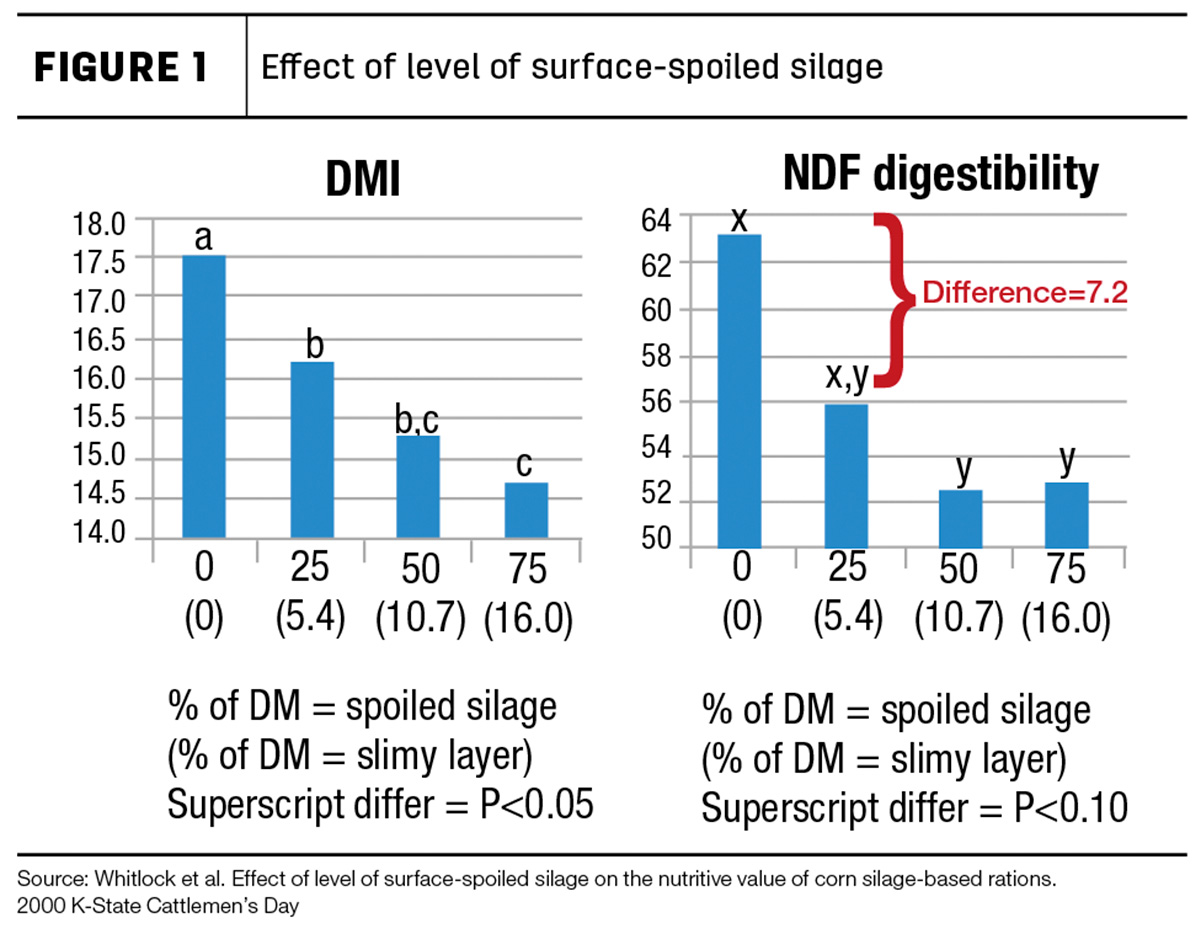The palatability of feed has a lot more to do with cattle health than some might think. Much like humans, if food doesn’t smell or taste good, cattle simply won’t eat it. However, we can’t discuss palatability without first considering the hygiene and quality of the forage in the feed. The better the forage is going into the feed, the better the outcomes will be in the animal, as the feed will be both more palatable and nutritious. After all, if you put garbage in, you’re going to get garbage out.
What causes spoiled forage
Even before harvesting, environmental factors such as droughts, floods and hailstorms can have a significant impact on the quality of feed. Both drought and excessive moisture change the physiology of the plant, while hail can create tissue damage, stressing the plant. At harvest, improper techniques such as delayed cutting or harvesting at an incorrect stage of maturity can result in increased moisture content and nutrient losses, making the forage more susceptible to spoilage, as well.
Perhaps the most important piece of the puzzle is proper fermentation. Insufficient fermentation can occur when the forage lacks necessary beneficial bacteria, as well as when it is inadequately stored. This is where inoculation, packing density, covering and sealing come into play.
Risks of spoiled forage
Spoiled forage smells, looks and feels unpleasant, which is not only unappetizing but can also pose health risks to animals. It can lead to decreased dry matter intake (DMI), inadequate nutrient absorption and imbalances in rumen fermentation, resulting in poor overall performance. Research conducted by Kansas State University demonstrated the negative impact of spoiled feed on cattle health. The study revealed that when steers were fed spoiled silage, their DMI dropped significantly, and analysis of rumen contents showed a nonexistent fiber mat. This indicates that spoiled intake negatively affects rumen health, compromising the animal’s ability to digest and utilize nutrients effectively, leading to potential nutritional deficiencies and reduced productivity.
Garbage in, garbage out
There are two major mistakes producers can make when it comes to feed.
- Diluting spoiled silage: Many producers will feed a little spoiled silage, diluting it with normal silage. While this is tempting, knowing how much work goes into silage production, it’s ill-advised. As noted in the Kansas State study, diluting spoiled silage with normal corn has negative effects on crude protein (CP) digestibility and DMI. Even a small amount of spoiled silage can destroy the integrity of the rumen, impacting overall health.
- Ensiling wet forage: When alfalfa, grass or other cereal grain silages are harvested at higher moisture levels and ensiled without an inoculant, a clostridial fermentation can happen. Clostridia can lead to a decrease in feed quality and can result in the production of noxious gases and compounds with foul odors, such as biogenic amines and ammonia. A study looking at substituting direct-cut alfalfa silage with alfalfa hay found that as the levels of putrescine and cadaverine odors increased in the diet, DMI decreased by more than 25% when all the hay was substituted for silage. In addition, rumen dry matter digestibility and outflow decreased as spoiled silage replaced more of the hay in the diet (Figure 1).

Maintaining high-quality forage
Starting from the harvesting process, various factors can influence feed quality, including pests, molds and weather conditions. It is important to control these factors by managing potential drought or flood impacts, employing proper inoculation techniques and ensuring effective packing of the silage.
Inoculation and proper packing are arguably the most crucial to success. Inoculation introduces beneficial bacteria to promote proper fermentation and reduce spoilage, while packing ensures the removal of oxygen, facilitating anaerobic conditions for optimal fermentation and preservation.
When it comes to inoculants, quality and the right combination of bacteria are key. Research from the University of Florida showed that corn silage inoculated with a combination of Pediococcus pentosaceus 12455 and Lactobacillus buchneri 40788 had 4.4% less feedout loss compared to untreated silage.
L. buchneri NCIMB 40788 applied at 400,000 cells per gram of forage or 600,000 cells per gram of high-moisture corn will prevent wild yeast growth and increase stability. It has also been shown to increase aerobic stability of high-moisture corn and corn silage and increase the bunk life of the total mixed rations (TMRs) produced. Its performance has been further improved by combining it with Lactobacillus hilgardii CNCM I-4785, which allows for early opening and feedout after only 15 days.
There’s extensive research that shows silage fermentation and good management practices support the highest-quality silage. It is a simple process, but one that must be closely controlled to provide consistent results. Healthy, highly productive cattle need clean, palatable feed to ensure the most success, and forage quality cannot be improved throughout the ensiling process. That’s why preventative measures are crucial. Because if you put garbage in, you’re going to get garbage out.
References omitted but are available upon request. Click here to email an editor.








